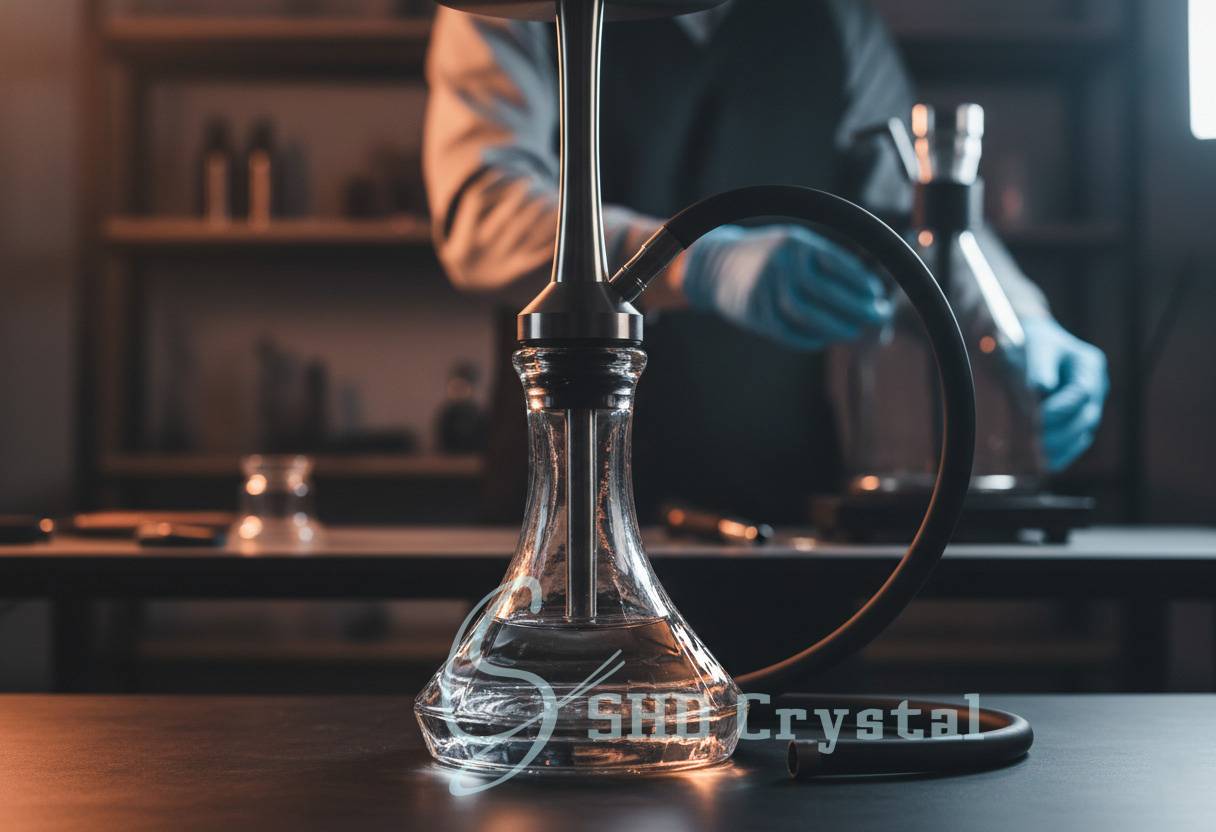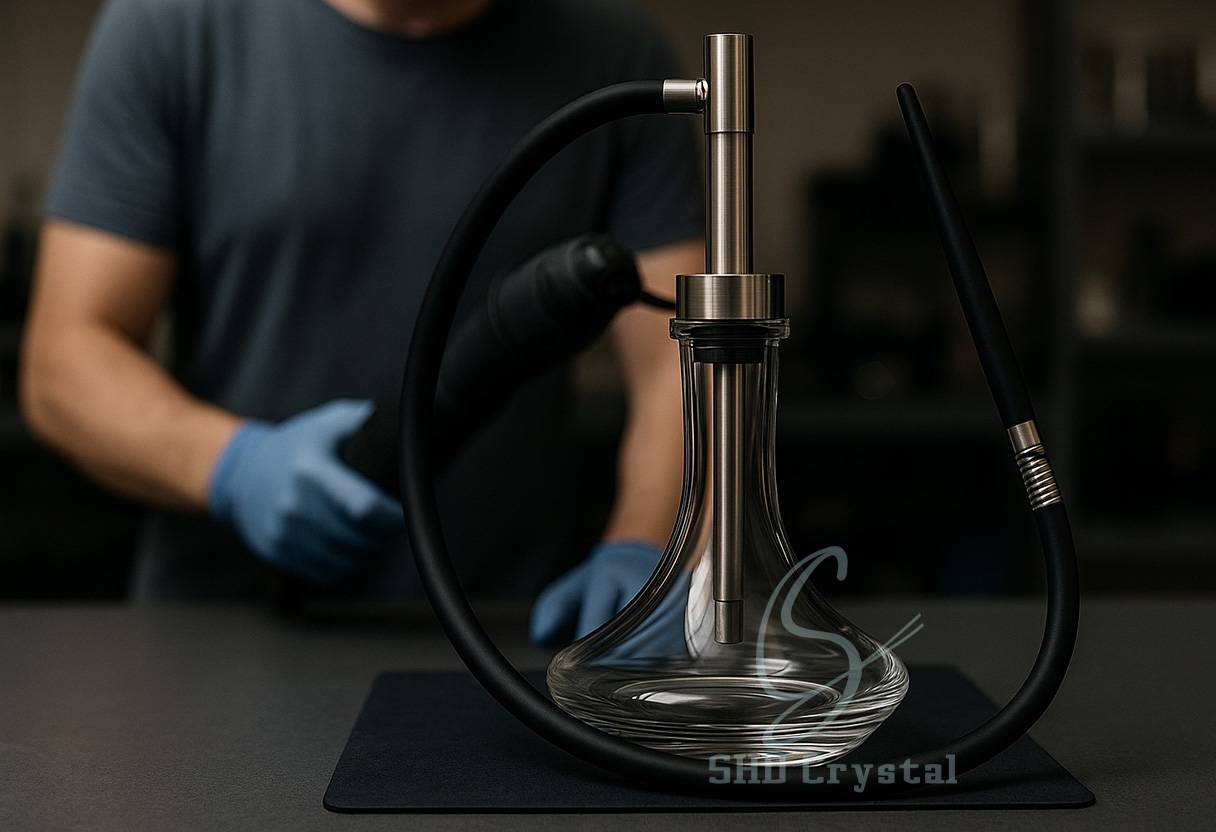> Blogs > Temperature Tolerance of Glass Hookah: Mastering Heat Resilience
Temperature Tolerance of Glass Hookah: Mastering Heat Resilience
Core keywords: temperature tolerance of glass hookah, thermal shock resistance in hookah glass, heat-resistant hookah base
Among all components of a waterpipe, the temperature tolerance of glass hookah determines both its safety and performance longevity. This property defines how well glass resists rapid heating, cooling, and microfracture stress during each session. Without proper handling, even the most elegant design can fail under uneven heat gradients. For manufacturers and café operators alike, mastering thermal control means preventing accidents and ensuring consistent draw quality.

Temperature Tolerance of Glass Hookah: Key Factors and Practical Guidance
Understanding the temperature tolerance of glass hookah begins with its composition and continues through daily care. Modern hookah artisans now engineer glass bases and stems using controlled annealing techniques to balance clarity with stability. However, real-world endurance depends less on lab figures and more on everyday discipline—how users manage water temperature, ambient conditions, and post-session cleaning. This process is also essential to maintaining thermal shock resistance in hookah glass under repeated stress.
- Material Composition and Structure
Two major glass types dominate the market: borosilicate and soda-lime.
Borosilicate glass features a higher coefficient of thermal resistance and is used in scientific equipment; it tolerates abrupt changes up to 165 °C without cracking.
Soda-lime glass, favored for its aesthetic color options, offers brilliance but demands gentle thermal transitions.
Choosing the right type is crucial for sustaining the temperature tolerance of glass hookah in commercial settings, where repeated cycles of heat exposure and cooling are common. Borosilicate-based systems provide better thermal shock resistance in hookah glass, ideal for high-volume cafés and lounges.
- Role of the Hookah Base in Thermal Balance
The heat-resistant hookah base acts as the system’s thermal buffer. Its volume and waterline absorb excess heat from the stem, preventing local hotspots that might induce fractures. To maximize performance:
-Fill the water to the neck curve—not beyond.
-Avoid pouring ice water into a recently rinsed warm base.
-Set the hookah on nonconductive mats to isolate it from cold tabletops.
Consistent handling practices preserve the temperature tolerance of the glass hookah, extending equipment lifespan and improving session stability. Over time, this steady approach enhances the thermal shock resistance in hookah glass for professional-grade reliability.
- Environmental and Operational Variables
External conditions—drafts, air conditioning, or outdoor humidity—affect cooling rates. Experts recommend gradual heating using controlled charcoal positioning rather than direct flame contact. This incremental approach mitigates stress and enhances thermal shock resistance in hookah glass, allowing the vessel to adapt to environmental variance safely.
By following these methods, users maintain the equilibrium that defines a heat-resistant hookah base, ensuring optimal draw and protection from sudden temperature swings.
- Cleaning and Defect Prevention
Residue buildup alters heat distribution. Always rinse the glass hookah base with lukewarm water before applying detergent. Avoid abrupt temperature changes while cleaning; microcracks invisible to the naked eye compromise the temperature tolerance of glass hookah over time.
Routine inspection with LED backlighting reveals early flaws before catastrophic breakage occurs. Cleanliness is not just aesthetic—it’s a fundamental aspect of preserving thermal shock resistance in hookah glass.
- Expert Craftsmanship and Measured Testing
Glass technologists now employ infrared thermography to evaluate thermal performance across production batches. Uniform wall thickness and precision neck joints are the most reliable predictors of strength.
Artisans who document firing curves and controlled cooling intervals consistently deliver pieces with 30–40%greater durability than uncalibrated counterparts. Such attention to detail ensures every heat-resistant hookah base upholds certified temperature tolerance of glass hookah standards throughout its lifespan.
- Verified Performance in Professional Lounges
In high-volume cafés, operators monitor base temperature using infrared scanners during busy shifts. Records show that controlled cooling intervals of 2–3 minutes between sessions drastically reduce fracture incidents. Reliable suppliers now provide certification data on temperature tolerance of glass hookah, confirming compliance with ISO 3585 and comparable thermal shock resistance in hookah glass metrics.

Conclusion
The modern temperature tolerance of glass hookah reflects a synthesis of chemistry, craftsmanship, and care. By respecting heating cycles, cleaning rituals, and verified supplier data, users and professionals protect both safety and aesthetics.
A properly maintained heat-resistant hookah base embodies precision and longevity—proof that durability is not chance, but the result of controlled physics executed daily.
Optimize your setup with precision. Request our expert blogs guide on managing the temperature tolerance of glass hookah, featuring proven thermal shock resistance in hookah glass methods and practical maintenance steps for durability and safety.
- : No. 68 Shasong Road, Shajing Street, Bao'an District, Shenzhen, Guangdong Province
- : +86-755-2335 8353
- : info@shdcrystal.com
Follow us